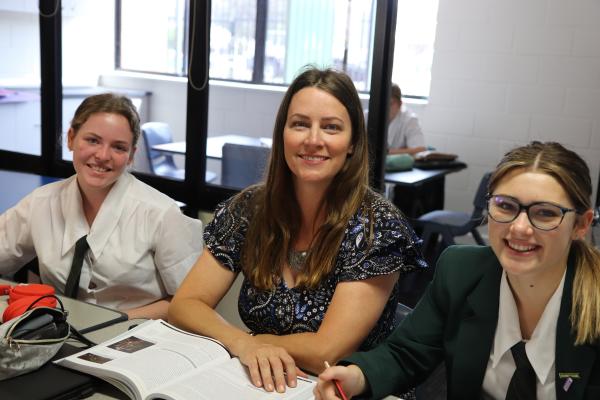By Juliano Oliveira
Australian teachers have had to reinvent themselves during one of the most severe medical crises in the world.
Away from school for months, thousands of professionals had to teach from home and, at the same time, be ingenious with the online tools at their disposal.
St. Joseph’s School teacher Lisa McPherson is part of this list. Locked out of Queensland for four weeks, she had no choice but to start teaching chemistry, science and mathematics online.
“I live just across the border in NSW, so me and my primary school-aged children [who also attend St Joseph’s] were locked out of Queensland for four weeks,” Ms McPherson says.
“My biggest stress during that time was making sure my absence didn’t disadvantage my Year 12 chemistry students. Their external exams are right around the corner, so I put a lot of effort into ensuring continuity of learning for them.”
Ms McPherson says that sometimes it was challenging to replicate classroom relationships and student collaboration in an online environment.
“Our school community has been incredibly supportive of teachers in general during the pandemic, which has made me feel valued,” she says.
“I’m hoping 2022 will be back to normal. My daughter, who is in Year 1, hasn’t had a year of school that didn’t contain a lengthy lockdown.”
Ms McPherson’s statement corroborates the results of a national study conducted by the Monash University School of Education, Culture and Society School of Education. It was found that 72 percent of respondents trusted that teachers’ work served the best interests of students.
The same report also found that 76 per cent of respondents agreed that teachers in Australia cared for the well-being of their students. In addition, 58 per cent admitted that they also prepare pupils well for life after school.
When questioned about future challenges, Ms McPherson raises the necessity of attracting professionals from other areas into teaching to share their knowledge and expertise in the classroom. A similar test is improving the professional image of education as a career to attract top-ranking students.
“As a scientist turned teacher, I have always felt a call to arms of sorts to encourage students into STEM fields. Australia, as a nation, needs creative and enthusiastic students to move into STEM careers if we are to keep pace with technological change at a global level,” Ms McPherson says.
“Further, young adults these days are faced with a variety of misinformation in social media. I see scientific literacy, taught in general junior science classes, as a way to teach students to analyse and evaluate a claim before they believe anything that crosses their screens.
“I personally feel privileged to have a sphere of influence over students, and take that responsibility quite seriously.”







